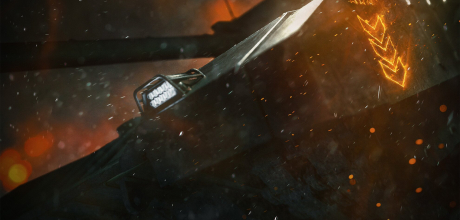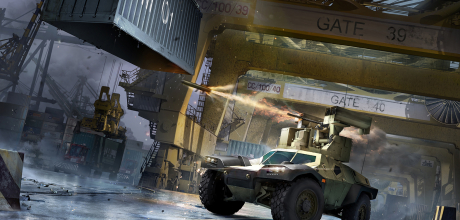
Commanders!
The second part of the Arabian Nights season will bring the long-awaited French line of progression vehicles and today, we are happy to introduce the first one of them to you – the Tier 3 AMX-50 Main Battle Tank that will appear as the initial vehicle of the branch.
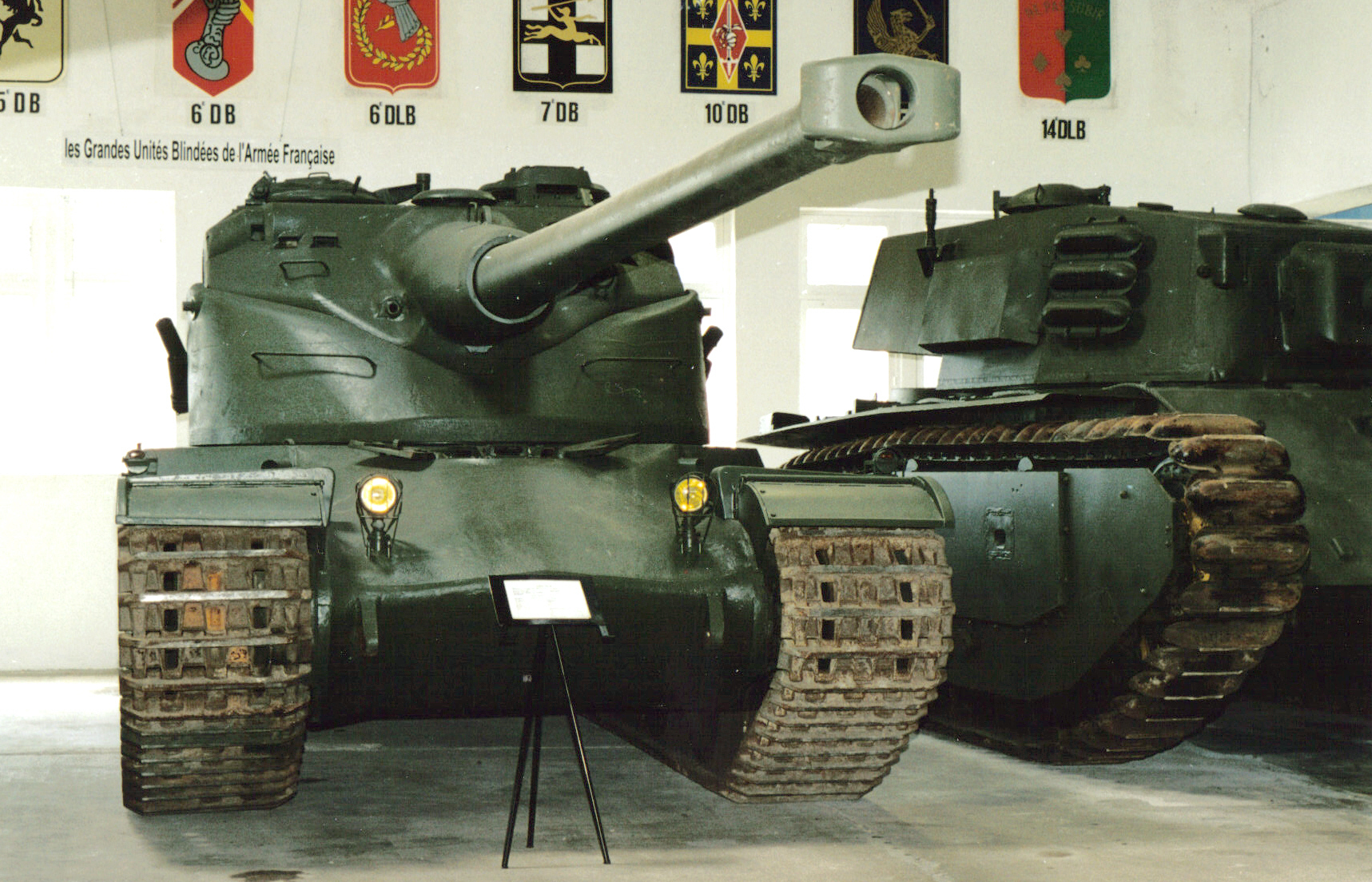
AMX-50
The story of the AMX-50 begins right at the end of the Second World War in France. In the May of 1945, the five year long German occupation ended and the French military industry awoke to a very different world from the one of 1940.
Before the Second World War, France boasted one of the most powerful militaries of the continent with some rather modern vehicles entering service by the time the conflict broke out, such as the Somua S35 cavalry tank. However, much of its armored force was quite dated with a large portion consisting of tiny light tanks such as the Renault R35. And, of course, there still were the stocks of the WW1 FT-17, the first mass-produced tank to feature the classic “rotating turret with an engine in the back” layout. Many of these obsolete machines were still in service two decades after the grand victory of 1918 and their age was showing.
The most powerful tanks the French had were some four hundred Char B1 Heavy Tanks, but these were slow, lumbering behemoths with very limited strategic value and while they did achieve some tactical successes (the best known being Pierre Billotte’s rampage), in the end, they could do little to stem the German tide and fell victim to the dreaded Blitzkrieg.
To a large degree, the Fall of France isolated the French designers from the wartime trends. They were partially familiar with the vehicles appearing on both sides of the conflict and some tank development was going on in secrecy throughout the war, but most of these programs were still rooted in the 1930s and based on pre-war technology while the world moved on. In the age of Panthers, Tiger IIs, IS-3s and Pershings, upgrading anything old just wouldn’t do and the French engineers, charged immediately after the liberation of France with restoring the French military glory found themselves surrounded by a lot of unfamiliar technology.
By the end of the war, the desire to restore the honor of France was very strong amongst the population and military both, calling for a number of expensive undertakings in order to catch up to the other tank-building nations. After all, for a country that gave birth to the modern tank, staying behind would just not do – and buying foreign (American) tanks in bulk, well, that just wouldn’t do.
Pride, however, was but one of the French motivations. A new conflict was looming on the horizon – the Soviet Union emerged from the maelstrom of war as a true world-class player superpower and the west quickly realized that the territories seized by the mighty Red Army would not be relinquished quickly, if ever. Soviet power had to be kept in check and France was called upon to do its part in the defense of Europe.
A major part of the issue was the quality of Soviet armor – the appearance of the IS-3 Heavy Tank was something that shocked the west deeply and led to a lot of development of various means of defeating them. France, too, would become a part of this race and the way the French have seen it, to fight the Soviet armored monsters, they would need some monsters of their own.
As the first step, the French engineers took a close look at the technology of the nation that defeated them earlier – Germany. The dreaded (if overplayed) reputation of German heavy tanks certainly played a role, but owning this category of tanks was as much a matter of prestige as of logic at that time, that’s simply how things were in 1945.
The machine the French liked the most was, of course, the latest of the German “big cats”, the Tiger II Heavy Tank. Using its general shape along with a large, boxy turret fitted with a massive 90mm gun, they came up with what became known as the ARL-44.
Popular British tank historian David Fletcher mentions the ARL-44 as one of the worst tanks ever built – and for a good reason. It was a disaster. For starters, some of the tank components were loosely based on the pre-war Char B1, such as its antiquated suspension. No French engine that would be powerful enough to move this beast was really available, so the French had to resort to fitting it with a captured German Maybach HL 295 one. Not exactly a very French thing to do, but it was at the time a practical solution. Even with this 600hp engine powering it, however, the tank was horribly slow due to its weight of 50 tons.
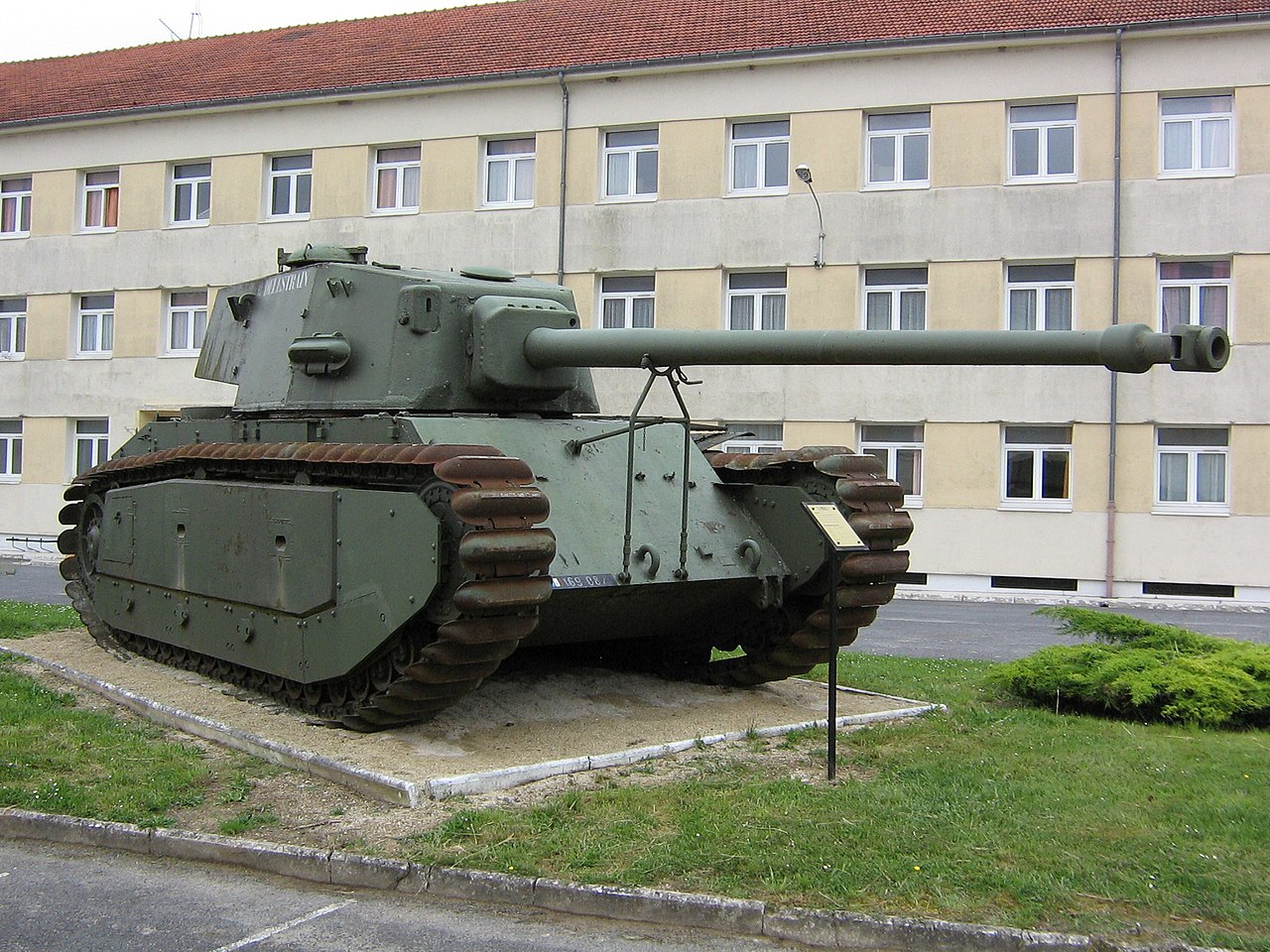
ARL-44
The turret was also pretty terrible, being crudely welded together from armor plates cut from a warship no less – the scuttled battleship “Dunkerque” served as a “donor” for the ARL-44 production armoring as no sufficient armored steel production was set up in France at that time. The whole thing was welded together in a rather crude manner and looked incredibly cheap. And then there was the gun, which, while powerful, was really way too long to be practical. In fact, to make it slightly less awkward, it could be retracted inside the vehicle for transportation, but it didn’t help much and, as a general rule, if you have to retract a gun to make your tank design vehicle, it’s probably not that good a design.
But, it was at least something. Immediately after the war, the French built sixty of these contraptions. Long story short, they were just as horrible in service as they were on drawing boards, everyone hated them and the military got rid of them the first chance they got. In this sense, they can be compared to the now legendary Bob Semple tank – they too took parts in a few parades and that was pretty much it. Clearly, something better was required.
Understanding how any designs, based on pre-war technology, could only work as a hotfix at the best of times, the French also started working on a new generation of Heavy Tanks. Taking the Tiger II once again as the starting point, a development program called M4 was launched at a design bureau called AMX (Atelier de Construction d'Issy-Les-Moulineaux). The result was a rather modern Heavy Tank that resembled a smaller Tiger II. The suspension was quite modern and the armament was quite powerful (90mm gun of roughly the same properties as the famous German 88mm L/71). It wasn’t what the French were looking for (the protection levels were too low) but it was a good start. Effectively, the French military was looking for a vehicle that would have:
- Firepower of a Tiger II (88mm L/71 equivalent)
- Armor of a Panther
- Mobility of a T-34
At this point, the French ran into the same dilemma as the Germans previously had. Basically, what you need is a tank big enough to carry a gun that is powerful enough to knock out enemy heavies. Powerful guns are big, so the tank has to be big as well. A big tank with enough armor to protect the crew as required by the military is heavy – making it smaller would solve the issue, but then a big gun wouldn’t fit. Of course, this was way before the development of advanced armor layouts that allow modern MBTs to keep their weight manageable while offering excellent protection levels.
The French were, at the same time, aware of the problems the Germans had faced with their heavy tanks (mostly reliability, transportability and fuel consumption) and with the ARL experience in mind, they had no desire to follow in their footsteps. Instead, they came up with a very smart solution – reducing the weight by reducing the turret size. And the way they did it was by using a new oscillating turret designed by a company called Compagnie des forges et aciéries de la marine et d'Homécourt (FAMH), also sometimes known as St. Chamond.
An oscillating turret is a rather unusual type of turret that does not “sit” on the hull the usual way, but is connected to the rest of the tank by the means of a cradle with a trunnion mechanism. A gun that is installed in such a turret does not depress or elevate the usual way – rather, the entire turret does around the abovementioned trunnions.
The advantages of such a turret are actually considerable, as it allows the installation of really powerful guns on a relatively small chassis that would not be able to hold such a weapon otherwise. The gun can also depress and elevate much better than it normally would thanks to the fact the entire turret is moving with it. Finally, if an automatic loading mechanism is attached to the turret as well (anything different would be really difficult), it is possible to achieve a really high rate of fire due to the fact that the gun does not have to be repositioned before reloading. In summary, we have a turret that is light, can feature a bigger gun than a usual one of the same weight category, allows for a very high rate of fire due to the way the loading is solved and is small enough not to provide a big target to an enemy. So, why isn’t everyone using it?
As you might have guessed or know already, such a design comes with a lot of quite serious drawbacks. First, by its nature, it’s almost impossible to seal and pressurize, making a vehicle using it vulnerable to gasses and other WMD threats. This alone was a big enough drawback to disqualify it from NATO service but, by the time it was designed, the Soviets didn’t technically have any nuclear weapons yet and the vehicles that used this type of turret the most (the AMX-13 Light Tank and the Panhard EBR Armored Car) were more intended for French colonial use rather than European battlefields.
Unfortunately, there were other major drawbacks, which included:
- Mechanical complexity and (therefore) lower reliability
- Due to the fact that the entire turret has to elevated or depressed, making it well-armored (and thus very heavy) was practically out of the question
- No direct access from the hull to the turret and vice versa (in case a driven was wounded, a turret crewmember would have to get outside of the vehicle to replace him or evacuate him)
- Weight of the turret generally prevented viable manual gun control and if the turret became jammed (which was, according to the later American trials, rather easy to do), the tank was completely unable to fire
In short, it was a peculiar solution that only the French were able to get to work – everyone else either didn’t bother trying or their projects ended in the prototype stage.

AMX-50 100mm
Around the time this turret got adopted by AMX, the project was renamed to AMX-50 (the number represented the intended weight of the vehicle – 50 tons). It’s worth noting that these tanks are generally referred to in multiple ways by various sources – AMX 50, AMX 50t, AMX-50A/B and others. Essentially, there were four stages of the entire project. It’s worth noting that the entire project was classified as a Medium Tank project and only received Heavy Tank classification very late on despite its initial weight of 50 tons – but 50-60 tons, that’s not a Medium Tank, not even in Germany.
The original AMX 50, armed with an automatically loaded 100mm rifled gun (replacing M4’s 90mm), arrived in 1949. The automatic loader had a drum-like magazine with 9 shells (the tank carried 60 shells in total). It weighed 53 tons and was, once again, powered by a German engine, the 850hp HL295 (some sources claim it was increased to 1000hp with the help of Maybach engineers). The massive hull resembled a Panther or King Tiger and was made of steel with the front being well-sloped and some 80mm thick.
It had, interestingly enough, a crew of four, despite there being no need for a loader. Two crewmembers were located in the turret (commander and gunner), two in the hull (driver and radioman). The suspension was a torsion bar one and this prototype is easily recognized by not having overlapping roadwheels. Two prototypes of this tank were built and were tested between 1950 and 1952. This variant is sometimes referred to as AMX-50 100mm.
The second and better known variant came in 1951. The hull still resembled the original prototype but the armor thickness was increased to 90mm (the effective armor value was over 150mm).
The turret was larger – a tall, oscillating variant called T.O.A. 120, armed with a massive automatically loaded 120mm rifled gun with a 6-round drum. Like its predecessor, it was powered by a modified German Maybach HL295 850hp engine (the same sources that claim the AMX 50 100 engine produced 1000hp claim that it was detuned for reliability reasons) but its weight grew to almost 58 tons. In order to cope with the additional weight, the suspension was reworked to two lines resembling some earlier German designs. That way, its weight was better distributed, leading to better ground pressure and thus off-road mobility. For its weight, it was a fast vehicle too with its maximum speed of approximately 50 km/h, although some sources claim as much as 65 km/h.
It’s worth noting that the design was notified internationally, including a series of trials in the United States of America at the Aberdeen proving grounds. Sweden also took note of the 1951 project, which directly influenced the Swedish EMIL and Krv design series.
Finally, between 1955 and 1956, two more variants were designed:
- AMX 50 “Surblindé”
- AMX 50 “Surbaissé”
As its French name suggests, the “Surblindé” 1955 variant was an uparmored version of the tank. This new AMX-50 had a very different hull from the original prototypes. Inspired by the IS-3, its front was shaped into what’s commonly called a “pike nose” wedge, maximizing frontal protection against the AP shells of the era by increasing the angle of impact so that they would bounce off. The armor thickness was the same, but the shape made the vehicle very resistant – the effective frontal armor value was around 200mm of steel. On the downside, this tank was, once again, heavier, already attacking the 60 ton milestone.
Finally, the “Surbaissé” (“lowered”) 1958 variant was designed to tackle the increasing weight by introducing yet another lighter (but, ironically, given its name, taller) oscillating turret to the design. The weight dropped to some 58 tons (also thanks to a lower hull – that is where the designation comes from). The French really wanted to get more power out of their Maybach engines (paired with ZF transmission copies) and even asked the Germans for help, but the project turned out to be a failure and the tank was still powered by 850hp HL295.
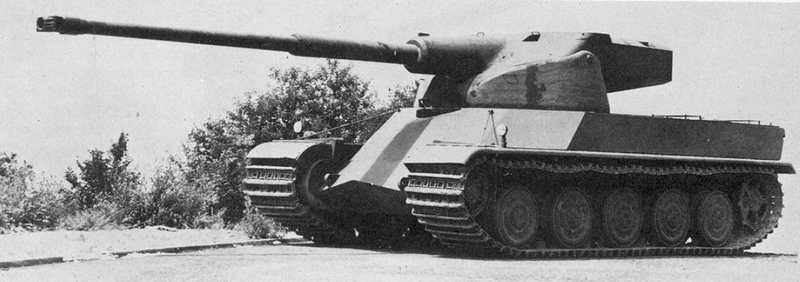
AMX 50 “Surblindé”
But, by this time, it was already clear that the AMX-50 would not be adopted by the French or mass-produced. There were several reasons for that.
First, the project suffered from many delays, usually caused by the technological obstacles the French engineers had to face. But by the mid-1950s, it was clear that Heavy Tanks were a thing of the past, except for the Soviet ones, where their continued survival was more due to the political influence of some of their staunch supporters rather than their actual combat value.
By 1958, when the ultimate version of the AMX-50 came out, the world had, once again, changed. It was thirteen years after the famous Berlin parade where the IS-3 had shocked the world – in fact, 1958 was the year the T-55 mass production was launched. A year earlier, the two Object 430 prototypes (that laid the foundations to the famous T-64 series a few years after that) had been built and had passed their factory trials. These tanks were all capable of firing modern shells against which simple steel offered no protection thanks to the advancements in HEAT development and, most importantly, could do the same job as Heavy Tanks at a fraction of the cost.
Another major factor was, ironically, the Korean War. Simply put, the Americans, caught off-guard by the onset of the conflict, produced the M47 Patton (which was still essentially a somewhat upgraded WW2 Pershing) en masse, found out that it sucked and promptly proceeded to build something much better (the M48) while the older model was offered to the European militaries at a very low price. France, somewhat desperate to finally re-arm its armored forces with something readily available and to get rid of the WW2 junk they had been using, took the deal and accepted the M47 in service. Some French military members criticized this idea by claiming that it would mean the end of the glorious French armor development tradition going back to the Great War, but this argument was invalidated by the success of the AMX-13 Light Tank and the continued French tank development that eventually turned into the AMX-30. And so, the AMX-50, along with the French Heavy Tank program, passed into oblivion by the order of Charles de Gaulle, who, upon his ascension to the post of the Prime Minister, personally ordered the closure of many French arms projects without immediately usable results.
Today, only one late prototype remains – the one in the Saumur tank museum. For the French, the program represented a valuable lesson that came a few years later into good use during the “standard tank” program that would eventually split into the German Leopard 1 and the French AMX-30. But that is a story for another time.
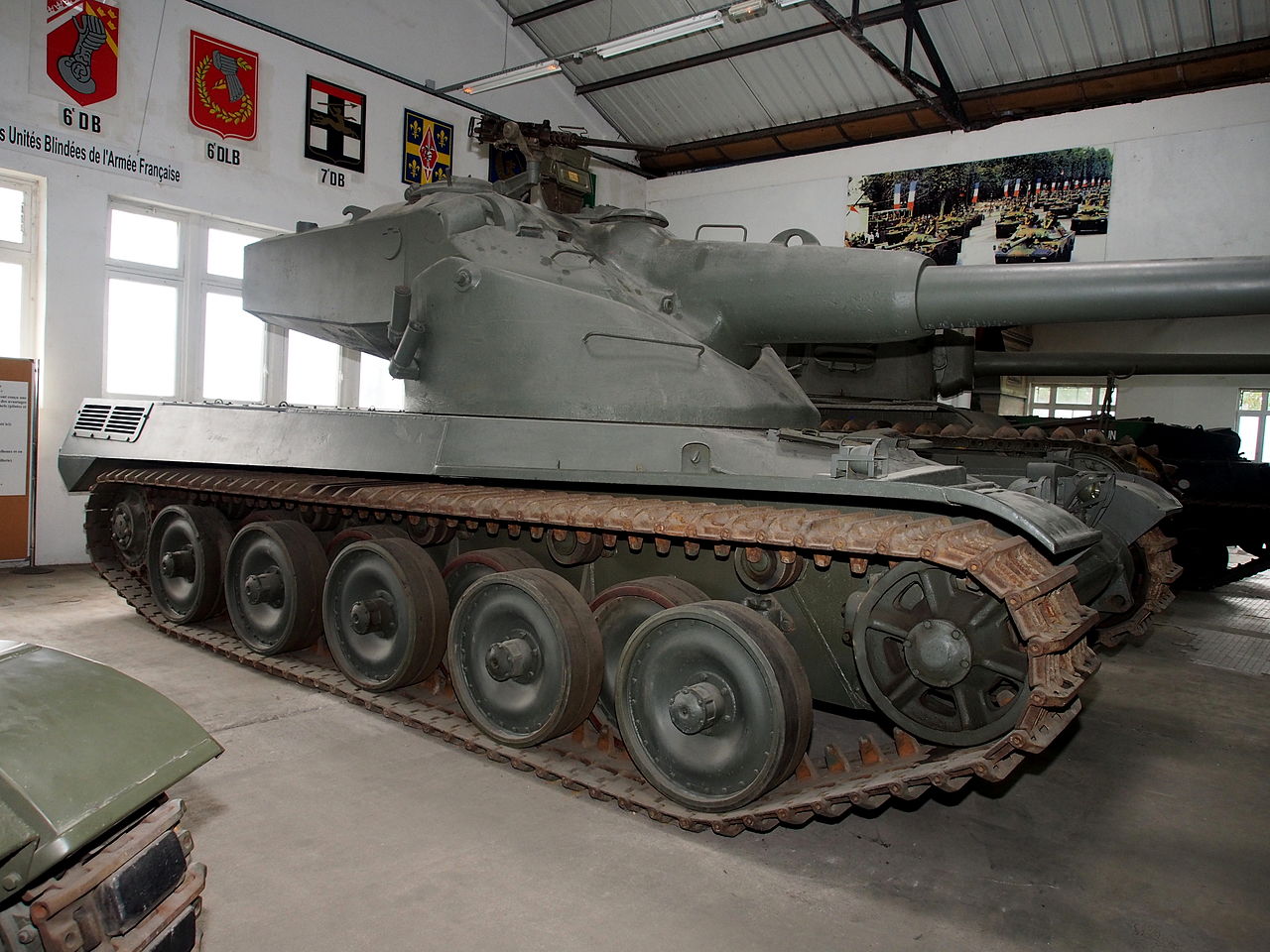
AMX 50 “Surbaissé”
Like was mentioned above, in Armored Warfare, the AMX-50 will be a Tier 3 Progression Main Battle Tank and the beginning of the French Main Battle Tank line, available along with a dedicated dealer called Francine De Laroche.
Where the Israeli line, introduced not so long ago, was aimed at new players, the French line will be aimed at more advanced ones. Instead of well-protected and relatively forgiving machines with solid performance across the board, the French MBTs will consist of machines that are generally aimed at two characteristics – mobility and firepower, sacrificing protection in the process.
That is not to say the MBTs will lack any protection whatsoever, but compared to the Israelis, the French will be more focused and will require special tactics as well as some careful gameplay. That is why we chose to start the line with a Tier 3 vehicle. In Armored Warfare, Tier 1 and Tier 2 vehicles together serve as an introduction to the game as a whole with more advanced mechanics coming only on higher Tiers. Tier 1 and Tier 2 vehicles therefore generally have a special matchmaking and only on Tier 3 do the players start to encounter more experienced players of higher Tiers. In this sense, introducing a Tier 1 or a Tier 2 vehicle for advanced players would go against our low-Tier design.
The AMX-50 is a good introduction to the branch in this regard. As MBTs go, the tank will not have the best protection levels – simple sloped steel won’t do much on this Tier – but it will feature above-average mobility as well as the ability to fire in explosive bursts of DPM thanks to its clip-like automatic loading mechanism. The tank will feature both a 100mm gun and a 120mm one. We are still deep in the process of balancing the vehicles – more details will be unveiled when we are closer to our goals. Please note that all the info above is based on work that is considered “in development” – changes are possible.
We hope that you will enjoy the French line of MBTs and will see you on the battlefield!




